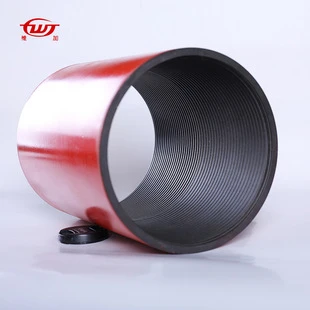- Afrikaans
- Albanian
- Amharic
- Arabic
- Armenian
- Azerbaijani
- Basque
- Belarusian
- Bengali
- Bosnian
- Bulgarian
- Catalan
- Cebuano
- Corsican
- Croatian
- Czech
- Danish
- Dutch
- English
- Esperanto
- Estonian
- Finnish
- French
- Frisian
- Galician
- Georgian
- German
- Greek
- Gujarati
- Haitian Creole
- hausa
- hawaiian
- Hebrew
- Hindi
- Miao
- Hungarian
- Icelandic
- igbo
- Indonesian
- irish
- Italian
- Japanese
- Javanese
- Kannada
- kazakh
- Khmer
- Rwandese
- Korean
- Kurdish
- Kyrgyz
- Lao
- Latin
- Latvian
- Lithuanian
- Luxembourgish
- Macedonian
- Malgashi
- Malay
- Malayalam
- Maltese
- Maori
- Marathi
- Mongolian
- Myanmar
- Nepali
- Norwegian
- Norwegian
- Occitan
- Pashto
- Persian
- Polish
- Portuguese
- Punjabi
- Romanian
- Russian
- Samoan
- Scottish Gaelic
- Serbian
- Sesotho
- Shona
- Sindhi
- Sinhala
- Slovak
- Slovenian
- Somali
- Spanish
- Sundanese
- Swahili
- Swedish
- Tagalog
- Tajik
- Tamil
- Tatar
- Telugu
- Thai
- Turkish
- Turkmen
- Ukrainian
- Urdu
- Uighur
- Uzbek
- Vietnamese
- Welsh
- Bantu
- Yiddish
- Yoruba
- Zulu
Understanding Well Tubing and Casing in Oil and Gas Production Systems
Well Tubing and Casing Essential Components in Oil and Gas Operations
In the realm of oil and gas exploration and production, well tubing and casing are critical components that ensure the safe and efficient extraction of hydrocarbons from underground reservoirs. Understanding their functions, types, and installation processes is essential for anyone involved in the oil and gas industry.
What is Well Casing?
Casing is a series of pipes that are installed in the drilled wellbore to maintain the well’s integrity. Its primary purpose is to prevent collapse of the wellbore, isolate different underground formations, and prevent the contamination of groundwater. Casing helps to provide structural support to the well, ensuring that it remains stable over time. There are several types of casing based on their purpose and the depth of the well
1. Surface Casing This is the first layer of casing installed and typically extends only a few hundred feet deep into the well. It protects freshwater aquifers and provides a stable base for subsequent casing strings.
2. Intermediate Casing Used when a well penetrates deeper formations with unstable conditions, intermediate casing serves to protect the higher-pressure formations encountered below the surface casing.
3. Production Casing Installed to the depth of the reservoir, production casing supports the installation of production tubing. It is critical for providing a pathway for the hydrocarbons to flow to the surface.
The installation of casing is a meticulous process that involves drilling the well to the desired depth, cleaning the wellbore, and then lowering the casing into place. Once positioned, cement is pumped into the space between the casing and the wellbore, creating a robust seal. This cement job is vital as it helps to secure the casing in place while providing the necessary barrier against fluid migration.
well tubing and casing

Well Tubing A Vital Connection
While casing provides structural support, well tubing serves a different but equally important purpose. Tubing is a smaller diameter pipe that runs inside the production casing and is specifically designed for the flow of oil and gas to the surface. It allows for efficient production management and facilitates the processes of injection and flow control.
Tubing is designed to handle high-pressure and corrosive environments. Various grades and materials are available depending on the specific conditions of the well, including carbon steel, stainless steel, and alloys designed to resist sour gas and corrosive agents.
The Importance of Proper Installation
The proper installation of both casing and tubing is crucial for the overall success and safety of oil and gas operations. Poorly installed casing can lead to well control issues, such as blowouts or well collapses, which pose significant risks to personnel and the environment. Similarly, improper tubing installation can affect production flow rates and cause premature wear or failure in the production system.
In addition, monitoring and maintenance of both casing and tubing are vital. Regular inspections and repairs can mitigate issues before they escalate. Technologies such as downhole sensors and video logging have become invaluable for maintaining the integrity of the well over its lifecycle.
Conclusion
In summary, well tubing and casing are indispensable components in oil and gas production. Casing provides the structural integrity needed to protect wellbore stability and environmental safety, while tubing allows hydrocarbons to be transported efficiently to the surface. As technology and techniques continue to evolve, the industry must prioritize the proper installation, monitoring, and maintenance of these critical elements to ensure safe and productive operations. Addressing the challenges associated with well construction and completion will remain a fundamental aspect of successful oil and gas exploration and production for years to come.
-
Tubing Pup Joints: Essential Components for Oil and Gas OperationsNewsJul.10,2025
-
Pup Joints: Essential Components for Reliable Drilling OperationsNewsJul.10,2025
-
Pipe Couplings: Connecting Your World EfficientlyNewsJul.10,2025
-
Mastering Oilfield Operations with Quality Tubing and CasingNewsJul.10,2025
-
High-Quality Casing Couplings for Every NeedNewsJul.10,2025
-
Boost Your Drilling Efficiency with Premium Crossover Tools & Seating NipplesNewsJul.10,2025







